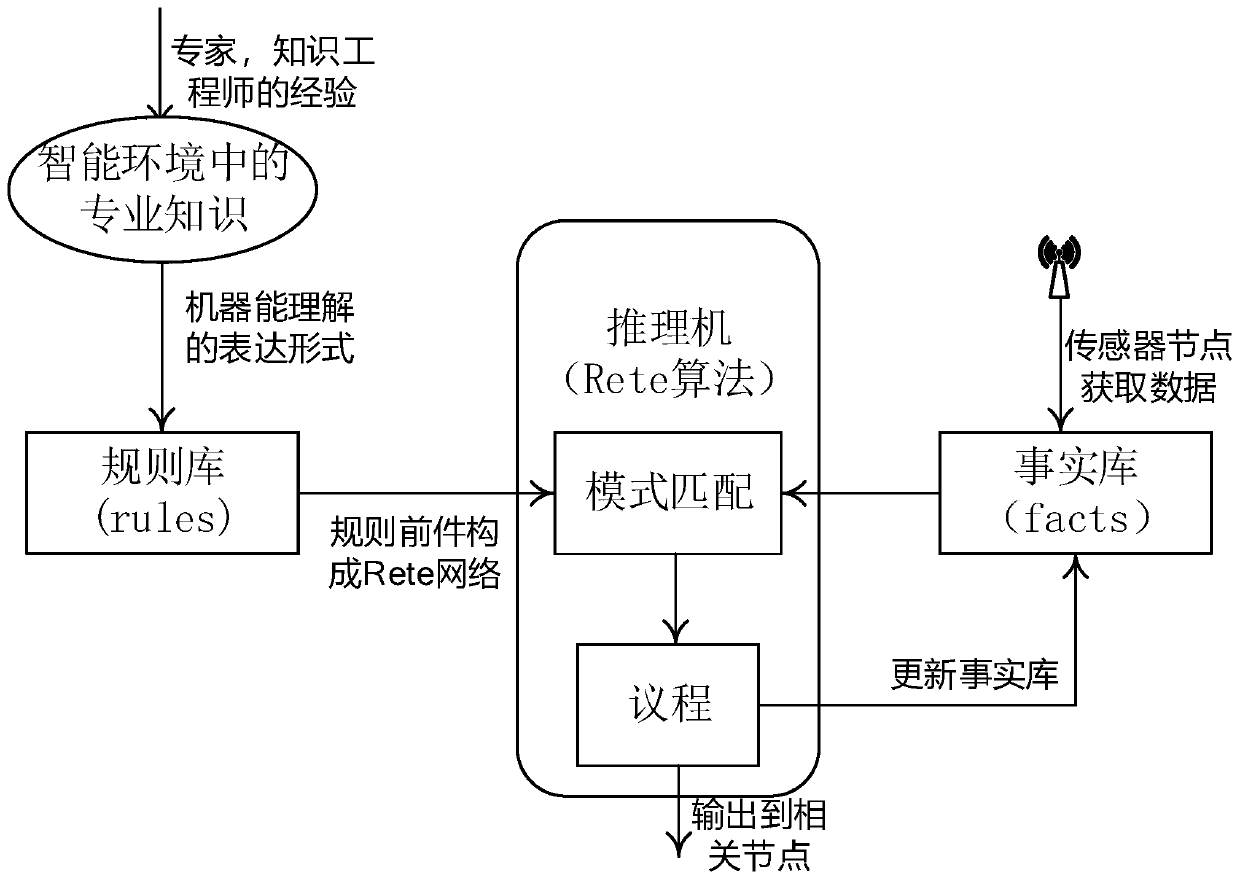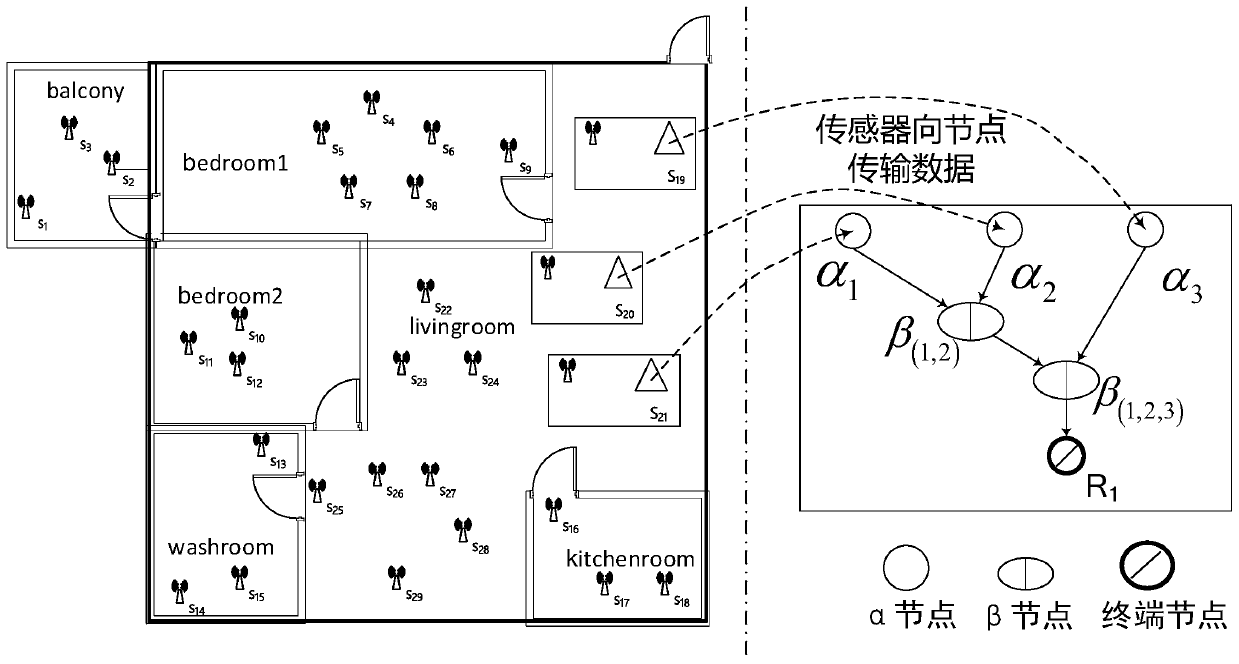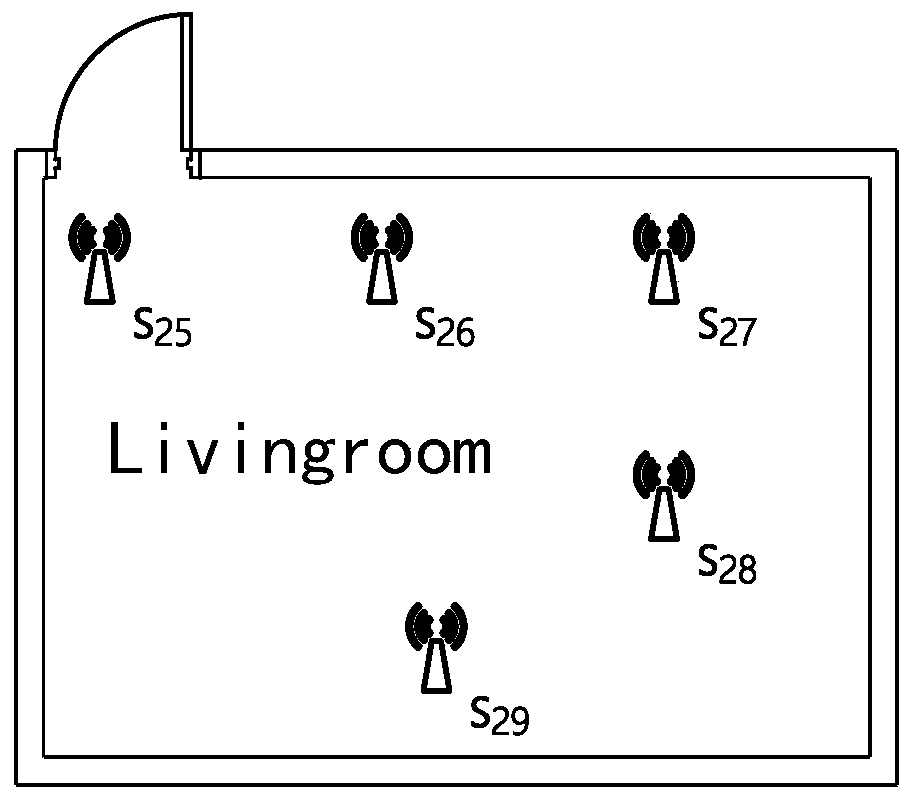An Optimal Allocation Method of Distributed Inference Nodes for Intelligent Environment
An intelligent environment and inference node technology, applied in digital transmission systems, data exchange networks, electrical components, etc., can solve the problems of embedded device storage resources, limited memory consumption, time-consuming sensor node transmission, and idle other nodes.
- Summary
- Abstract
- Description
- Claims
- Application Information
AI Technical Summary
Problems solved by technology
Method used
Image
Examples
Embodiment Construction
[0077] Embodiments of the present invention are described in detail below, examples of which are shown in the drawings, wherein the same or similar reference numerals designate the same or similar elements or elements having the same or similar functions throughout. The embodiments described below by referring to the figures are exemplary only for explaining the present invention and should not be construed as limiting the present invention.
[0078] like figure 1 As shown, in the rule reasoning of the intelligent environment, the sensor device obtains the original context data information in the surrounding environment and processes it as a fact base, and the knowledge engineer converts the professional knowledge related to the intelligent environment into an expression form that the machine can understand to construct the rule base , so as to infer some corresponding conclusions after matching, and then transmit these conclusions to control the equipment in a certain room in...
PUM
 Login to View More
Login to View More Abstract
Description
Claims
Application Information
 Login to View More
Login to View More - R&D
- Intellectual Property
- Life Sciences
- Materials
- Tech Scout
- Unparalleled Data Quality
- Higher Quality Content
- 60% Fewer Hallucinations
Browse by: Latest US Patents, China's latest patents, Technical Efficacy Thesaurus, Application Domain, Technology Topic, Popular Technical Reports.
© 2025 PatSnap. All rights reserved.Legal|Privacy policy|Modern Slavery Act Transparency Statement|Sitemap|About US| Contact US: help@patsnap.com



